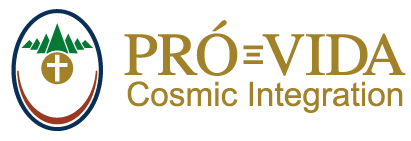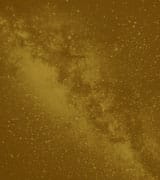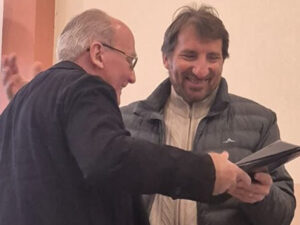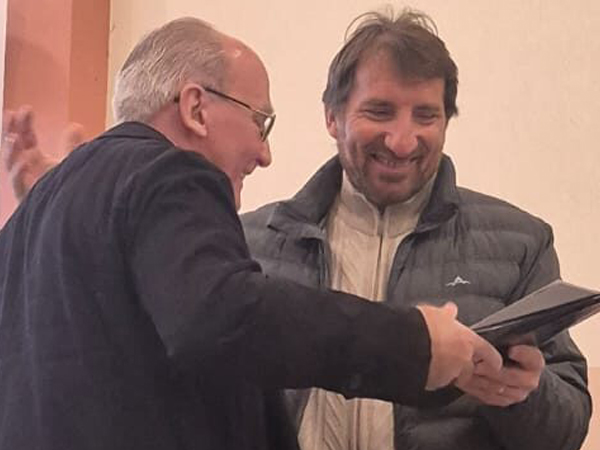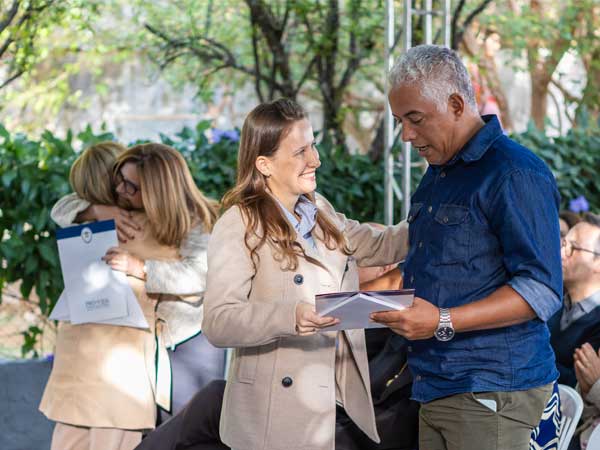Astronomical Ephemeris – September – 2021
Astronomical Ephemeris – September – 2021
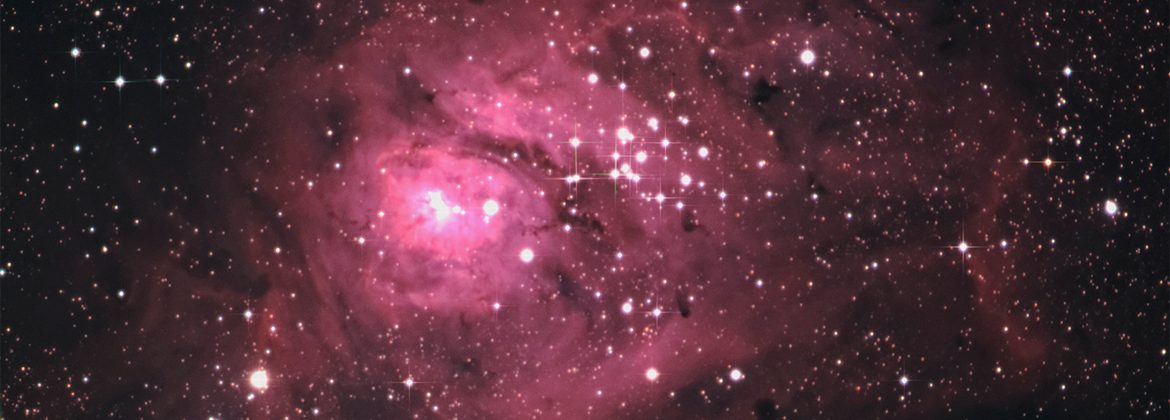

In September, five events, observable in both the southern and northern hemispheres without the help of astronomical devices, show us, once again, how the union and composition existing between the celestial bodies, through the forces of nature, maintains the balance and evolution of the cosmos.
Moon phases
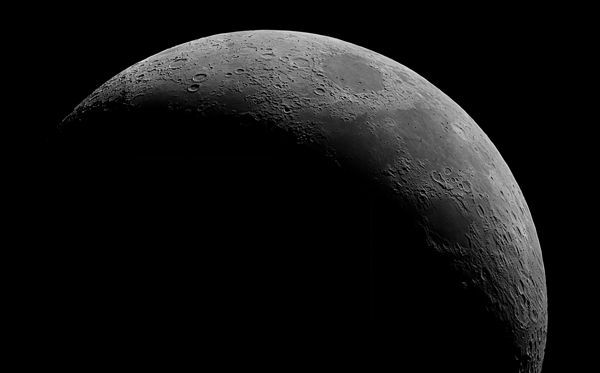
September 6 – New Moon
September 13 – First Quarter
September 20 – Full Moon
September 28 – Last Quarter
Conjunctions in September
In September, our satellite, the Moon, repeating the August performance, will again form conjunction with Venus, Saturn and Jupiter, on the 9, 16 and 18, respectively.
It’s worth remembering that in astronomical terms the conjunction phenomenon occurs when two or more celestial bodies appear to be very close to each other from the perspective of observation here on Earth.
September 9
Conjunction between the Moon and Venus
On that day, the Moon will pass at 4º4’ north of Venus around 18:12 (Brasilia -3UTC) forming the conjunction. The pair will be approximately 37° above the western horizon, both in the constellation Virgo. After about 3 hours they will sink towards the horizon.
The Moon will be at magnitude -10.4 brightness, but will not be visible as it’s in the new phase, and Venus at magnitude -4.1.
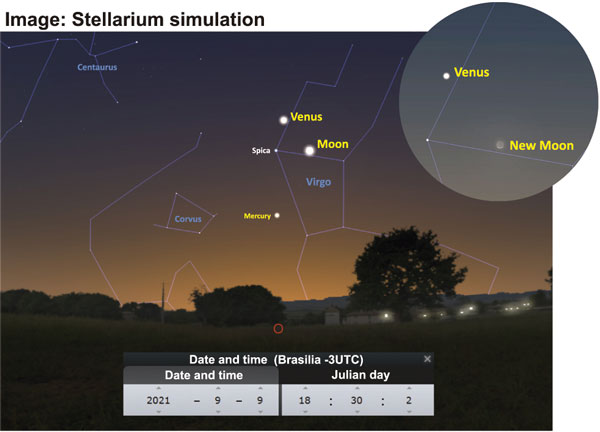
September 16
Conjunction between the Moon and Saturn
On the 16th, when the Moon and Saturn approach, passing 3°40’ of each other, they will form the conjunction.
This will occur from 18:17 (Brasilia -3UTC) when the pair is 52º above its eastern horizon, both in the constellation Capricorn. They will reach their highest point in the sky, about 85º above the horizon, around 9 pm (Brasilia -3UTC). They will remain observable until 2:56 am (Brasília -3UTC) on the 17th.
The Moon will be at -12.5 magnitude brightness and Saturn at 0.2 magnitude.
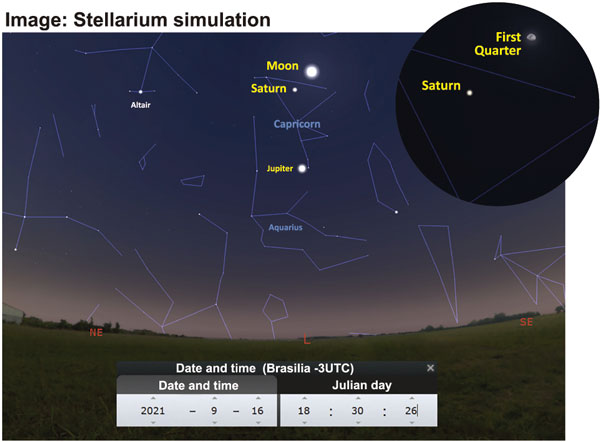
September 18
Conjunction between the Moon and Jupiter
The Moon and Jupiter, when approaching, passing at 3º45’ of each other, will constitute the conjunction phenomenon, at approximately 18:16 (Brasilia -3UTC) on September 18.
At this point, they will be 36° above the eastern horizon, both in the constellation Capricorn. Around 9:58 pm they will reach their highest point in the sky, 81º above the horizon, remaining visible until approximately 3:49 am (Brasilia -3UTC) on the 19.
The Moon will be at magnitude -12.6 brightness and Jupiter at magnitude -2.8.
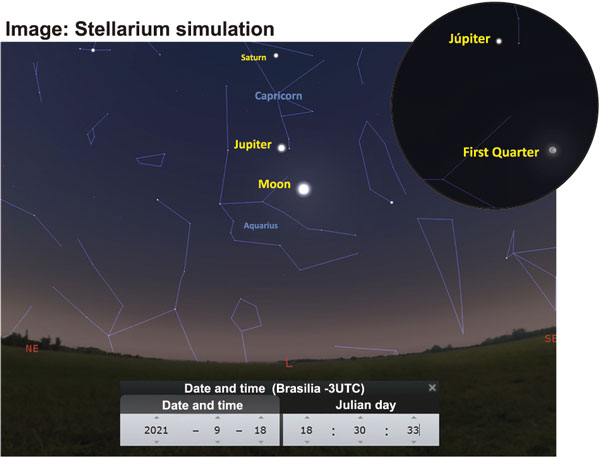
The three conjunctions are observable with the naked eye or through binoculars, but will not fit within a telescope’s field of view.
Important: It’s noteworthy that the indications of cardinal points and angles, in relation to the horizon line, vary according to the geographic coordinates in which the observer is located. To make it easier to locate objects in the firmament, use the constellations as a reference.
September 14
Maximum Elongation of Mercury
Although it can be seen with the naked eye from here on Earth, Mercury is difficult to observe as it’s the smallest of the eight planets that make up the solar system and has the closest orbit to the Sun. So, to better observe it, you will need to be at an angular distance of more than 12° from the Sun, and it also has to be early morning or late afternoon, so the sun’s luminosity won’t dazzle you.
This makes September 14 an ideal day for observing Mercury, when it will be at an angular distance of 26.8º east of the Sun in the early evening, shining at a magnitude of 0.1, which means that it will be at maximum elongation to the east.
The angular altitude of Mercury, at this time, in relation to the horizon line, will vary according to the geographic location of the observer. In São Paulo, Brazil, for example, it will reach 25º.
To observe it, look towards the western horizon after sunset, towards the constellation Virgo, between 6:30 pm and 7:20 pm, approximately. (Brasilia time -3UTC).
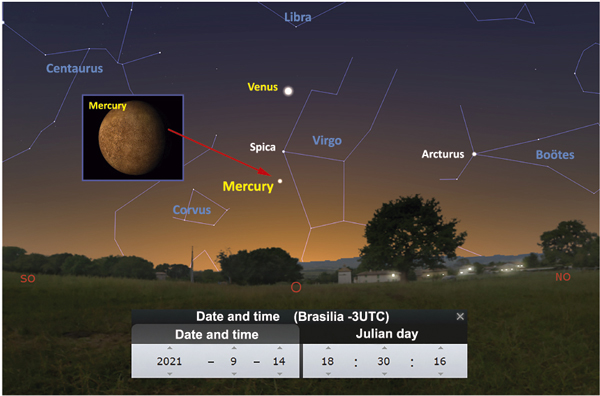
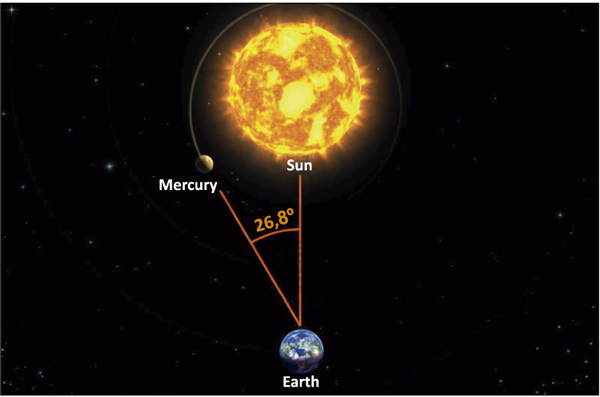
September 22
Spring Equinox in the Southern Hemisphere and Autumn in the Northern Hemisphere
The combination of the 23º27′ angle of inclination of the Earth in relation to its axis with its translation movement – orbit around the Sun – results in a difference in the incidence of solar rays in its hemispheres, except for two days in the year, one in March and the other in September. On these days, the Earth’s poles are not inclined in relation to the Sun and the sun’s rays fall on the Equator, making both hemispheres equally illuminated and day and night having the same duration, 12 hours.
These two moments of equal illumination in both hemispheres are called equinoxes (a word that comes from the Latin aequus (equal) and nox (night)), and mark the beginning of the spring and autumn seasons.
On September 22, we will have the spring equinox in the southern hemisphere and autumn in the northern hemisphere.
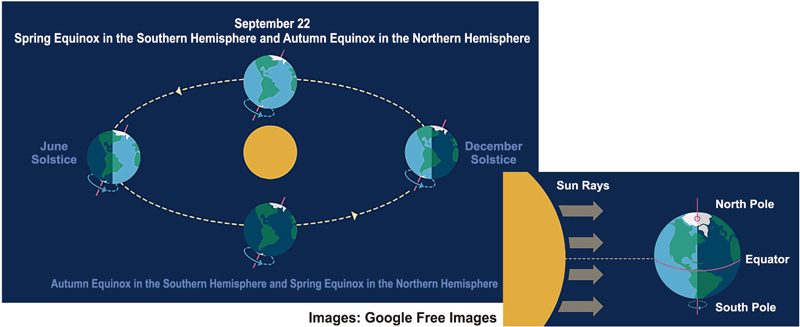
Estimating the distances of objects in the sky
For a better understanding of astronomical phenomena, it is important to understand the measurement system of apparent size and distance in degrees, minutes and seconds…
Angular measurements, in degrees, minutes and seconds, allow us to calculate the size and apparent distances of celestial bodies in the cosmos.
Assuming that the Earth and the celestial dome are divided into 360 parts or degrees, we can estimate the distances and sizes of celestial bodies using just our hands, since the little finger (pinky) corresponds to an apparent distance or size of 1 degree in the celestial dome.
The images will illustrate and show you how you can make use of this system.
First, position yourself. And then use your hand, following the convention:

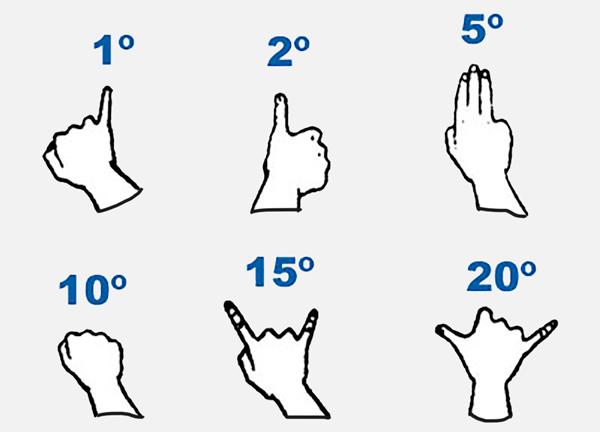
Sources: jpl.nasa.gov/calendar / solarsystem.nasa.gov / in-the-sky.org / Stellarium.org / rmg.co.uk / earthsky.org / space.com / derekscope.co.uk / planetary ephemeris – Jet Propulsion Laboratory (JPL)
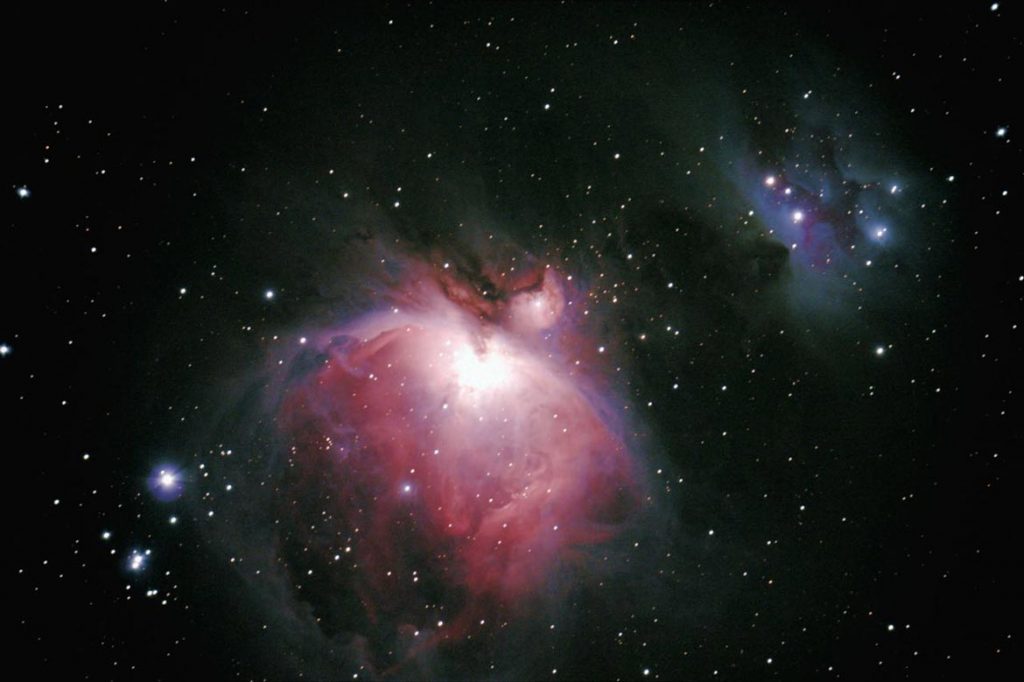
Astronomical ephemerides is a monthly calendar prepared by the Astronomy Sector, which is one of the 12 that make up the PRÓ-VIDA Laboratory Department. In the department, studies, research and scientific experiments related to various themes are developed, as well as field activities and lectures.

Astronomical ephemerides is a monthly calendar prepared by the Astronomy Sector, which is one of the 12 that make up the PRÓ-VIDA Laboratory Department. In the department, studies, research and scientific experiments related to various themes are developed, as well as field activities and lectures.
